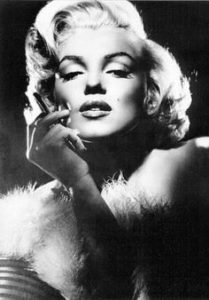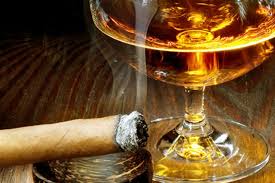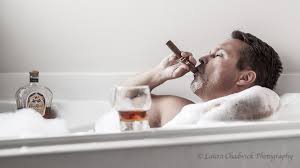
“The cigar is the perfect complement to an elegant lifestyle”. I just love that saying. A good premium cigar is like a fine wine – it goes well with anything. Or so they say. To me a cigar speaks of quality and elegance, sophistication and style. Premium cigars are about quality and not necessarily price. There is just something sexy about a man or woman socializing with a great cigar and fine glass of wine. It looks both relaxing and sexy at the same time without looking obscene or trashy.
As you know, smoking as become the great “no-no” here in the US. There isn’t too many places you can go and smoke. Now various smoking hangouts are popping up. Also, there are the old Cigar clubs showing up. They allow people who enjoy the occasional smoke to enjoy it with like minded people. As well they enjoy the great brandy or glass of fine wine.
What makes a cigar a cigar?
The type of tobacco used and the flavor to me exemplifies the difference between a bad cigar and a great cigar.
Tobacco leaves are harvested and aged using a curing process that combines heat and shade to reduce sugar and water content without causing the bigger leaves to rot. This takes between 25 and 45 days, depending upon climatic conditions and the nature of sheds or barns used to store harvested tobacco. Curing varies by type of tobacco and desired leaf color. A slow fermentation follows, where temperature and humidity are controlled to enhance flavor, aroma, and burning characteristics while forestalling rot or disintegration.
The leaf will continue to be baled, inspected, un-baled, re-inspected, and baled again during the aging cycle. When it has matured to manufacturer’s specifications it is sorted for appearance and overall quality and used as filler or wrapper accordingly. During this process, leaves are continually moistened to prevent damage.
Hand-Rolled Or Machine Made
Quality cigars are still handmade. An experienced cigar-roller can produce hundreds of very good, nearly identical, cigars per day. The rollers keep the tobacco moist — especially the wrapper — and use specially designed 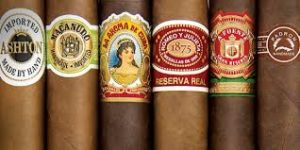 crescent-shaped knives, called chavetas, to form the filler and wrapper leaves quickly and accurately. Once rolled, the cigars are stored in wooden forms as they dry, in which their uncapped ends are cut to a uniform size. From this stage, the cigar is a complete product that can be “laid down” and aged for decades if kept as close to 21 °C (70 °F), and 70% relative humidity. Once purchased, proper storage is typically in a specialized wooden humidor.
crescent-shaped knives, called chavetas, to form the filler and wrapper leaves quickly and accurately. Once rolled, the cigars are stored in wooden forms as they dry, in which their uncapped ends are cut to a uniform size. From this stage, the cigar is a complete product that can be “laid down” and aged for decades if kept as close to 21 °C (70 °F), and 70% relative humidity. Once purchased, proper storage is typically in a specialized wooden humidor.
Some cigars, especially premium brands, use different varieties of tobacco for the filler and the wrapper. Long filler cigars are a far higher quality of cigar, using long leaves throughout. These cigars also use a third variety of tobacco leaf, called a “binder”, between the filler and the outer wrapper. This permits the makers to use more delicate and attractive leaves as a wrapper. These high-quality cigars almost always blend varieties of tobacco. Even Cuban long-filler cigars will combine tobaccos from different parts of the island to incorporate several different flavors.
Quality
In low-grade and machine-made cigars, chopped tobacco leaves are used for the filler, and long leaves or a type of “paper” made from tobacco pulp is used for the wrapper. They alter the burning characteristics of the cigar vis-a-vis handmade cigars.
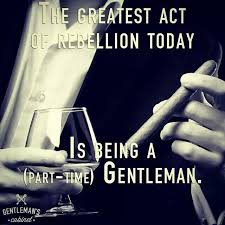
Most machine-made cigars have pre-formed holes in one end or a wood or plastic tip for drawing in the smoke. Hand-rolled cigars require the blunt end to be pierced before lighting. Some smokers inhale the smoke into the lungs, particularly with little cigars. A smoker may swirl the smoke around in the mouth before exhaling it, and may exhale part of the smoke through the nose in order to smell the cigar better as well as to taste it.
Cutting
Although a handful of cigars are cut or twirled on both ends, the vast majority come with one straight cut end and the other capped with one or more small pieces of wrapper adhered with either a natural tobacco paste or with a mixture of flour and water. The cap end of a cigar must be cut or pierced for the cigar smoke to be drawn properly. Some cigar manufacturers purposely place different types of tobacco from one end to the other to give the cigar smokers a variety of tastes, body, and strength from start to finish.
The basic types of cigar cutter include:
Lighting
The “head” of the cigar is usually the end closest to the cigar band, the other the “foot”. The band identifies the type of the cigar and may be removed or left on. The smoker cuts or pierces the cap before lighting.
The cigar should be rotated during lighting to achieve an even burn while slowly drawn with gentle puffs. If a match is used it should be allowed to burn past its head before being put to the cigar, to avoid imparting unwelcome flavors or chemicals to the smoke. Many specialized gas and fluid lighters are made for lighting cigars. The tip of the cigar should minimally touch any flame, with special care used with torch lighters to avoid charring the tobacco leaves.
A third and most traditional way to light a cigar is to use a splinter of cedar known as a spill, which is lit separately before using. The thin cedar wrapping from cigars with one may be used.
Flavor
Each brand and type of cigar has its own unique taste. Whether a cigar is mild, medium, or full bodied does not correlate with quality.
Among the factors which contribute to the scent and flavor of cigar smoke are tobacco types and qualties used for filler, binder, and wrapper, age and aging method, humidity, production techniques (handmade vs. machine-made), and added flavors. Among wrappers, darker tend to produce a sweetness, while lighter usually have a “drier”, more neutral taste.
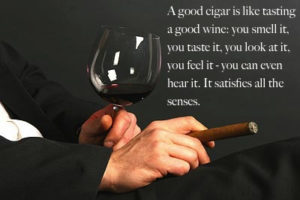
Evaluating the flavor of cigars is in some respects similar to wine-tasting. Journals are available for recording personal ratings, description of flavors observed, sizes, brands, etc. Some words used to describe cigar flavor and texture include; spicy, peppery (red or black), sweet, harsh, burnt, green, earthy, woody, cocoa, chestnut, roasted, aged, nutty, creamy, cedar, oak, chewy, fruity, and leathery.
Storing Cigars
The level of humidity in which cigars are kept has a significant effect on their taste and evenness of burn. It is believed that a cigar’s flavor best evolves when stored at a relative humidity similar to where the tobacco is grown, and in most cases, the cigars rolled, of approximately 65–70% and a temperature of 18 °C (64 °F). Dry cigars become fragile and burn faster while damp cigars burn unevenly and take on a heavy acidic flavor. Humidors are used to maintain an even humidity level. Without one, cigars will lose moisture and acquire the ambient humidity within 2 to 3 days. A humidor’s interior lining is typically constructed with three types of wood: Spanish cedar, American (or Canadian) red cedar, and Honduran mahogany. Other materials used for making or lining a humidor are Acrylic, Tin ( mainly seen in older early humidors) and Copper, used widely in the 1920s-1950s.
The Humidor
Most humidors come with a plastic or metal case with a sponge that works as the humidifier, although most recent versions are of polymer acryl. The latter are filled only with distilled water; the former may use a solution of propylene glycol and distilled water. Humidifiers, and the cigars within them, may become contaminated with bacteria if they are kept too moist. New technologies employing plastic beads or gels which stabilize humidity are becoming widely available.
A new humidor requires seasoning, after which a constant humidity must be maintained. The thicker the cedar lining the better. Many humidors contain an analog or digital hygrometer to aid in maintaining a desired humidity level. There are three types of analog: metal spring, natural hair, and synthetic hair. see ref 1.
Choose your cigar wisely
It’s important to know something about the blend before choosing a cigar. This helps to ensure you don’t choose a smoke that’s too strong or too mild. You don’t have to know every last tobacco component of the cigar to make an informed choice, but you should always have a basic idea of the cigar’s strength level before you buy it.
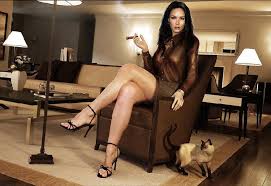
Most smokers know if they want a strong, medium or mild cigar. Strength and body refer to the cigar’s inherent intensity. One could smoke a cigar that is full of flavor, yet not particularly strong or full-bodied. This means there’s still plenty of finessed flavor that won’t impact the palate too heavily.
Sometimes, smokers want full, intense palate stimulation along with heavy flavors, much the way a coffee drinker wants a strong shot of espresso or a wine drinker wants a high-alcohol cabernet. That requires powerful tobaccos. Typically, a full-bodied, powerful cigar will contain ligero tobacco. These are the darkest, thickest leaves of the tobacco plant as well as the most oily and rich on account of their direct exposure to the sun.
Color and taste
Leaves tend to get less powerful as they grow lower down the stalk of the plant. Categorized as visos and secos, these lower-priming tobaccos are more nuanced in flavor and have better combustion. A full-bodied blend will contain more ligeros, a medium-bodied blend, more secos and visos.
You can’t always tell, however just by looking at the cigar. Dark, oily wrappers often indicate a strong smoke the way light wrappers often indicate a mild or medium-bodied smoke, however looks can sometimes be deceiving. Our ratings will point you in the right direction.
Also, beware the “sangria effect.” That happens when the cigar’s strength sneaks up on you. You think it’s a mild or medium-bodied cigar based on the easygoing flavors, but then when you try to stand up, you realize you can’t. See Ref 2.
Smoke Cool and Slow
Some cigar smokers puff too often. This is a mistake for a few reasons. Philosophically, a cigar is about enjoyment and savoring the moment. Smoking fast runs counterintuitive to this sentiment. Take your time and slow down.
But there’s a more concrete reason as well. Hyper-frequent puffing will inevitably overheat your cigar and cause it to become bitter. Often, that bitterness is irreversible.

Smoking Techniques
A perfectly constructed cigar is made to burn slow and cool in order to impart flavor in a steady progression. While there are no set laws as to how long a cigar should last, we believe that a five-inch cigar should last you at least 45 minutes. If you’re sucking down a five-inch robusto in 10 minutes, you’re treating the cigar like a cigarette, and that’s a big mistake. Puffing every 30 seconds to a minute should be an appropriate interval.
Keep in mind that smoking too slowly could have a negative consequence as well. Puff too infrequently, and your cigar will go out, meaning you’ll have to relight it over and over again. Constantly lighting an extinguished cigar could introduce unpleasant flavors of char, carbon, sulfuric fumes and bitterness. But don’t sweat a relight now and then.
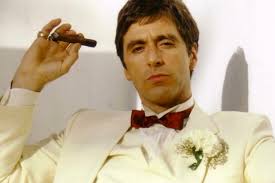
Leave the ash on for as long as you can. The ash serves as a temperature regulator and minimizes contact between the air and the lit tobacco, thus keeping it cooler. Great cigars are made of whole leaves, not chopped up tobacco. Those leaves have structure, and will hold an ash of a size that’s surprising to a novice.See Ref 2
Price vs Quality
Price isn’t always an indicator of quality. A cigar that costs $30 won’t always be more enjoyable than a cigar that costs $10. Inexpensive cigars sometimes score better than pricey ones in our blind tastings. At the same time, it’s important to understand that the best materials, finest construction and most acute quality control will cost money. As is true with all raw materials, not all tobacco is of equal quality. Some crops are better than others.
You might have heard (or read) a few rather ignorant maxims like “tobacco’s tobacco” or “all tobacco is basically the same.” Statements like that are uninformed, and they presuppose that different levels of quality do not exist. Nothing could be further from the truth.
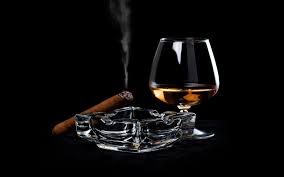
Appearance
Standards of quality are determined by appearance, combustion, aroma and flavor. A highly aromatic, flavorful tobacco that is pristine in appearance and elastic to the touch is going to be more expensive than a coarse leaf that doesn’t have much smell or taste.
Some tobaccos also take longer time to age and ferment for maximum performance. That process will also end up raising the cost of your cigar—the longer the cycles, the longer the tobacco has to be stored in a warehouse, and that costs money.
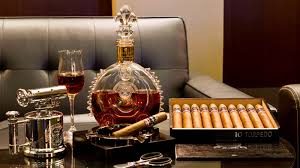
The tobacco could be a low-yielding varietal, meaning that the crop was not large in the field, yet the small amounts produced were outstanding. This could also make your puros a little pricier. Sometimes it’s merely a question of supply and demand.
Forget the Hype
Occasionally, a cigar is expensive for arbitrary or gimmicky reasons that have nothing to do with quality or availability. Those unfortunate exceptions are not normal in the premium cigar industry. If a cigar is expensive, the cost is usually justified.

That being said, there’s no guarantee you’re going to love the expensive cigar. The flavor profile and strength level (either high or low) of a high-end smoke might not be to your taste. The best way to know is to try it. If you spend the extra money and find that the experience doesn’t justify the cost, then stay within your comfortable price range. If you find extraordinary levels of flavor, refinement and complexity, you’ll know the cigar was worth the splurge. See Ref 2
Getting started
With all this information, you are now on your way to becoming a cigar aficionado. There are so many options to choose from that you will have no problem finding the right cigar for you. You may have several or just one. You can have a cigar for causal, leisure or social or after dinner.
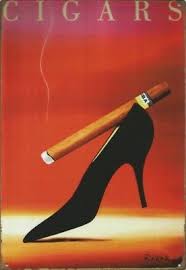

Cigars are not regulated to just men. Women over the years are finding the joys of having a premium cigar as the mood fits. The confident, independent woman has found comfort, enjoyment and relaxation with a good cigar and maybe a fine glass of wine. In a relaxing bubble bath or sitting on the patio watching the sunset after a romantic dinner, a cigar and a glass of wine is ideal.
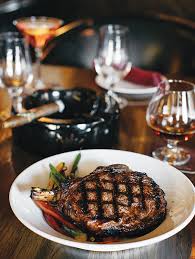
If you are ready to become part of an elite group of cigar aficionados, click here to check out a great selection.


Ref1: https://en.wikipedia.org/wiki/Cigar
Ref2:https://www.cigaraficionado.com/article/10-things-every-cigar-smoker-should-know-19531


